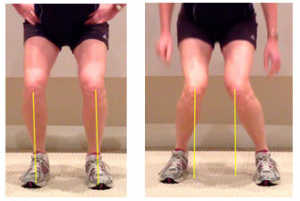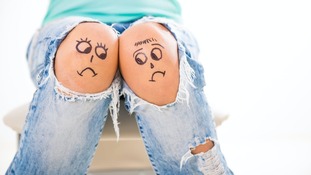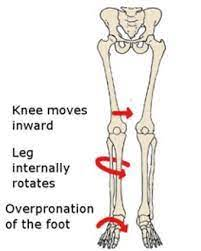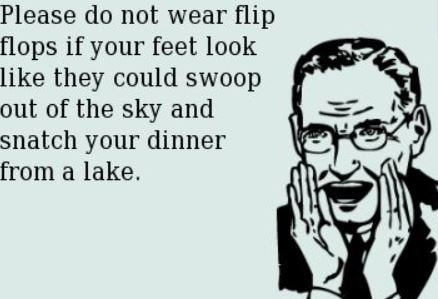
If you’ve ever spent any amount of time in the gym, you’ve probably heard your coach tell you not to let your knees come together while you’re squatting. This “knee-knocking” motion during the squat or deadlift is called a Valgus position. While this movement pattern can have a detrimental effect on your knees (and hips and ankles for that matter) over a long period of time, it can be advantageous in certain scenarios! If you’ve ever spent any amount of time in the gym, you’ve probably heard your coach tell you not to let your knees come together while you are squatting. This “knee-knocking” motion during the squat or deadlift is called a Valgus position. This can have a detrimental effect on not just your knee, but your hip and your ankle as well!
So, let’s jump right into the top 5 detrimental effects valgus can have on your body!
1. Let’s first kick this off with how the valgus motion affects the knee itself. During the squat, the knees pinch inwards toward each other but the hips and feet stay relatively stable. By losing the straight line between your hip, knee, and toe, you introduce a lot of rotational stress to the knee joint. Unfortunately, the knee is a hinge joint meaning that it is really made to only bend and straighten with some slight rotation. Over time, this extra rotation results in an aggravation to the sensitive structures of the knee and can begin to cause pain around the kneecap or especially the inside of the knee. If left unchecked, this can become a structural issue resulting in persistent pain, early onset arthritis, or ligament over lengthening and tears.

2. Now moving up to the hip. When the knees pinch it forces the femur, or thigh bone, to move into adduction and internal rotation. This motion of the hip increases pressure within the joint and on the structures immediately surrounding the joint. Oftentimes, this will result in a painful pinching at the front of the hip especially when squatting is repeated many times under high levels of fatigue. If this motion is allowed to continue, it will not only cause decreased hip mobility but could be potentially the cause of a hip labral tear altering the structural integrity of the hip.

Still up at the hip, there is a secondary result of the forced adduction and internal rotation position of the hip. With the femur moving into this position, it results in over lengthening of the glutes. As a muscle is lengthened, it loses the ability to contract powerfully. Thinking about Olympic lifts, we need the quick and forceful contribution of the glutes to hit triple extension. Without as much contribution from the glutes, the quads and muscles of the low back are tasked with lifting greater loads and can result in knee pain, low back pain, or even radicular pain down the sciatic nerve.
4. The last two shift down toward the foot and ankle. Number four is regarding the ankle. While the knees pinch, the ankle no longer moves with appropriate mechanics and results in a loss of pure dorsiflexion which is the toes toward the nose direction. By not getting into pure dorsiflexion with squats, stairs, or step ups we begin to lose this motion and result in stiff ankles. So how do stiff ankles cause knee pain?? When you go to squat, your center of gravity will be shifted forward from the middle of the foot toward your toes. In doing so, it further causes the glutes to be much less active throughout the exercise but also places more demand on the quad muscle resulting in a “quad dominant” squat that can lead to pain surrounding the knee cap and patellar tendon.
5. Lastly, as the knees move into valgus the arch of the foot collapses. Similar to what happens with the glutes, loss of our arch places the muscles that support it in a lengthened position and they become unable to maintain the neutral position of the foot. So not only do we lose the stable foundation of the foot at this point, but with the arches collapsing the knee is driven FURTHER into more valgus. Extra valgus stress and an unstable base set the stage for increased pain or creation of symptoms at any joint along the leg or low back.

While there is all kinds of negativity surrounding the knee valgus position, what is rarely talked about is the BENEFIT of this position. When loading up toward your 1-3 rep max during squat or getting ready to do a max effort vertical jump, you may notice that you naturally move into and out of this position to get out of the hole. While this is still technically a valgus position, the quick movement in and out of it results in a “quick stretch” to glutes. This quick stretch is a technique the body naturally uses to increase the neuromuscular drive of that particular muscle resulting in a more forceful contraction. This is something that you will see all the time during competitions and is completely normal! Looking at the picture below, you can see his front knee is wayyyy inside the hip and ankle and he is the proud owner of 2 gold medals as well as the world record holder in Snatch, Clean and Jerk, and Total.

To wrap it up, Valgus stress at the knee can be beneficial in the well trained athlete to achieve greater max output. However, the use of this position should generally be limited. With lower percentage squat/snatch/clean work, lunges, step ups, or anything similar that pops up in a WOD we should be working to avoid the knee valgus position. For the most part, the undesirable effects of the valgus position tend to occur if we are repeatedly moving into it over long periods of time. In regards to more traditional sports athletes (such as soccer, football, or lacrosse), this position is one we need to master and even strengthen. While planting, cutting, or changing directions the knee is required to move into valgus and when uncontrolled over periods of time can lead to non-contact ACL tears. If you have had an ACL reconstruction, you were probably beat over the head by your PT and/or AT about avoiding this position, however when trying to return to sport this is absolutely something we have to train as its a normal position assumed during competition.
If you are an athlete in Charlotte, NC dealing with knee pain, we would love to help. The Charlotte Athlete is a sports physical therapy clinic in Charlotte that solves pain and injuries by identifying the root cause of the issue to solve the problem for good – so it NEVER comes back. Just click here to learn more!
Thanks for reading,
Dr. Mike

